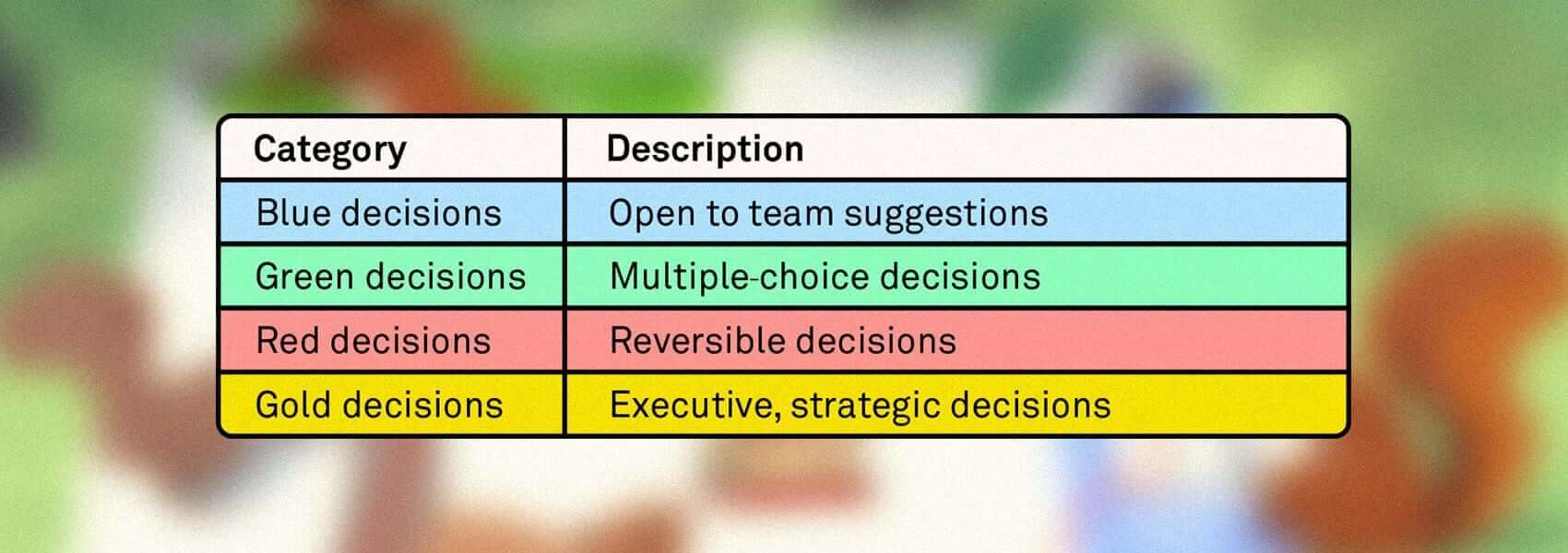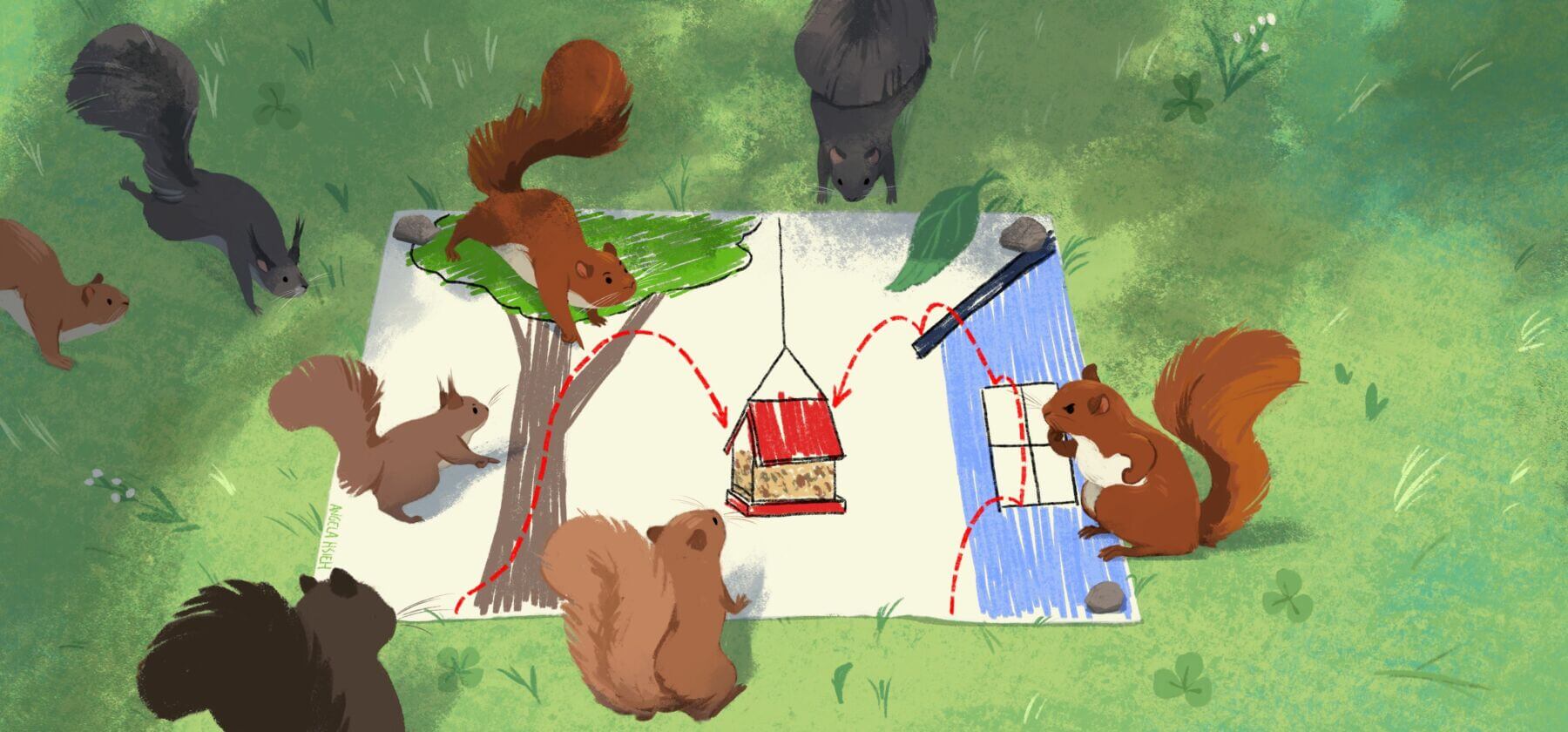Is your support team craving more involvement in decision making?
There are lots of good reasons why you should try to involve your employees in decision making when possible. From improving team morale and satisfaction to getting new perspectives that can drive business growth, giving your team greater visibility and input into decisions that affect their work has benefits for everyone.
At Intercom, we recently introduced a new decision-making framework for our Support team that ensures that everyone is heard and feels involved. Here’s what we learned – and how you can use it, too.
3 reasons to involve your team in decision making
There are three great advantages to involving your support team – or indeed any team – in decision making.
Firstly, it gives team members a greater sense of ownership, which contributes to feeling motivated and like their work matters. This is imperative to a positive company culture, as well as higher team morale.
Secondly, it offers fresh business ideas. If only senior leadership is involved in decision making, it increases the risk of stagnation. Sourcing ideas from your support team means you’re more likely to get a more diverse set of responses.
“Your support team will have a unique perspective on customer needs and pain points. They’re invaluable sources of knowledge and expertise”
Thirdly, your employees are an incredibly useful resource. Those on your support team (and in other customer-facing roles) will have a unique perspective on customer needs and pain points. They’re invaluable sources of knowledge and expertise – and companies should invest the time to listen to them.
Learning from experience
At Intercom, our Support team’s happiness and retention is a top priority for us. We want to continuously check in on how they’re feeling and make sure they feel empowered to give input on important decisions.
We use our twice-yearly company survey to pulse check on how the team feels regarding decisions being made that affect their day to day.
Comparing results from survey to survey exposed that dissatisfaction among team members had especially risen in more difficult conditions or challenging times, when the decisions made “above their heads” resulted in some negative consequences for the team and disruption to their usual workflows.
For example, like most other businesses, when COVID-19 hit, we too felt the pinch. Our support conversation volumes rose, resources were tight, team morale was low, and people were worried about their wellbeing as well as the wellbeing of the people they care most about.
“Despite being a well-conceived and well-intentioned decision, it was one too many in a time of considerable change”
At the leadership level, we tried to create solutions for the conversation volume problem at hand by trialing regional splits and new prioritization models. But despite being a well-conceived and well-intentioned decision, it was one too many in a time of considerable change. As a result, the implementation failed, thus making day-to-day work for our team even worse.
Feedback was loud and clear, but our reaction was too slow. This resulted in the team getting louder about our decision-making processes, and we decided to look into this topic in order to find a solution. How could we make the process more transparent and help the team feel more involved?
Exploring decision-making frameworks
As we researched, we learned more about an interesting phenomenon called the “law of triviality,” or the “bicycle shed effect.” This is the idea that when planning or making decisions, people can often spend more time on the small, inconsequential details than on the major issues. (The original example was of a committee working on the plans for a nuclear power plant but getting distracted by which materials to use for the staff bike shed, hence the term “bikeshedding”.)
As a leadership team, we could see that this mindset – the irresistible urge to discuss small decisions in great detail, at the expense of the actual issue at hand – could quickly become a problem. So we decided to look into ways of ensuring we could stay focused on the task at hand, while still making the whole team feel involved.
“This framework doesn’t only help you to involve your team more in decision making; it also helps their work become more proactive instead of reactive”
One mindset that stood out to us was Jeff Bezos’ approach to decision making. Bezos breaks decisions down into two types: one-way doors, or decisions that are impossible to reverse, and two-way doors, which are ultimately reversible.
Combining this approach with our awareness of the bicycle shed effect (and how to avoid it), we’ve created our own decision-making matrix that gives those of us on the leadership team a useful framework when working on important decisions day to day.
This framework doesn’t only help you to involve your team more in decision making; it also helps their work become more proactive instead of reactive, an issue that many support teams in the industry are facing.
Creating the right decision-making framework for your support team
Before we start any project in customer support, we note the key problems to be solved and decide whether these decisions are blue, green, red, or gold decisions. Each color corresponds to a different level of importance, and requires a different level of team involvement.
Here’s what those colors mean.

Blue decisions: Open to team suggestions
Blue decisions don’t come with a specific solution in mind, just the problem to be solved. For these, we open the question to the team via focus groups, Slack conversations, surveys, or team meetings, to get feedback and ideas.
Example: “We have a lot of ‘reopened’ conversations as a team, what can we do to solve that?”
Green decisions: Multiple-choice decisions
Green decisions are multiple-choice decisions. That means that leadership asks for input on a few options via polls in Slack or Google Forms. By reducing the choices, we can ensure we don’t get waylaid by bikeshedding and stay focused on solving the problem at hand.
Example: “We’re making a workflow change to the way we do overtime. Do you prefer Solution A or Solution B?”
Red decisions: Reversible decisions
Red decisions are quick, important, change-driven, reversible (two-way door) decisions. In these situations, the team trials the proposed solution, gives feedback, and we have the opportunity to address issues or reverse back to the previous state if needed.
Example: “We’ll be trying a new Office Hours feature for the next two weeks. Let us know what you think, and we’ll discuss any feedback in our monthly meeting to see how it’s going.”
Gold decisions: Executive, strategic decisions
Gold decisions are executive, strategic decisions made on a company level. These decisions aren’t open for discussion. In cases like these, explaining the “why” behind the decision is key, so communication is our main priority.
Example: “As a company, we’ll be moving to a new performance review tool at the end of this quarter. Here’s everything you need to know about the new tool, why we’ve made the decision to move, how it will affect you, and what you can expect.”
In advance of rolling out this new framework, we shared the color matrix with the team, and held office hours where team members could bring any questions or concerns.
The results so far
We rolled this new framework out in April 2021. So far feedback has been overwhelmingly positive, and the team has told us that they feel the process of decision making is way more transparent.
“We’ve seen a 30% increase in favorability for the Support team, which is a clear indication that the team felt heard”
Several months after implementation, we found ourselves in a situation where we could once again pulse check the satisfaction rate of our team in regards to decision making and their ability to influence decisions. I’m pleased to report we’ve seen a 30% increase in favorability in this area of the company survey for the Support team, scoring slightly above the company average. This is a clear indication that the team felt heard and better empowered to influence key decisions that affect their work.
This change has also given managers more defined processes to follow when working on projects, which has helped create shared language and terminology surrounding decision making going forward.
While we’re happy with the results so far, this is only the first iteration of this new framework. As always, we’ll continue to seek feedback and improve. We believe that with more practice, accountability, and team involvement, we’ll be able to fully appreciate all the business benefits of a more involved, engaged support team: greater innovation, higher productivity, and better team morale.
